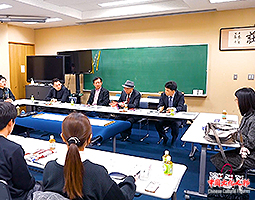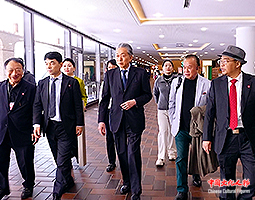 特别报道
特别报道
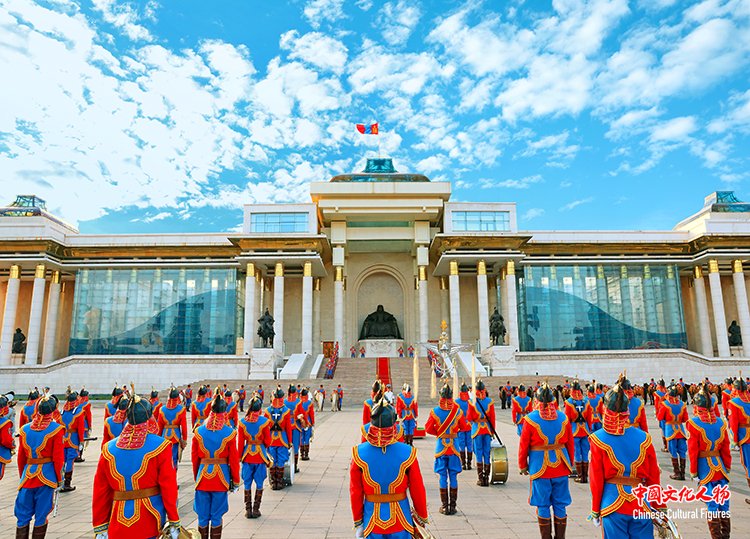
On July 10, Mongolia held an annual State Flag Day ceremony featuring a military parade on Sukhbaatar Square in the capital city of Ulaanbaatar, to celebrate the State Flag Day
Wang Baosheng, Editor-in-Chief of Chinese Cultural Figures/Photo Report

The north side of Sukhbaatar Square sits the National Palace, also known as the Government House, where there is a massive seated Genghis Khan statue in the center
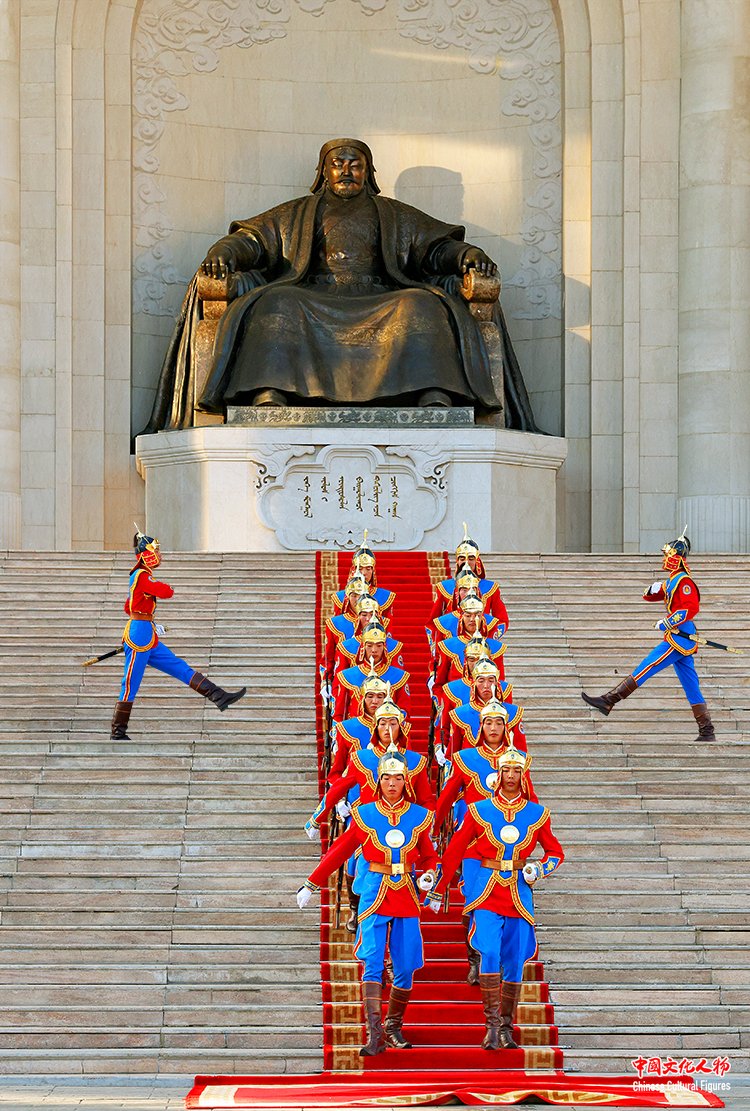
At the ceremony of the Mongolian State Flag Day, the Mongolian State Honor Guard wears armor and a metal helmet
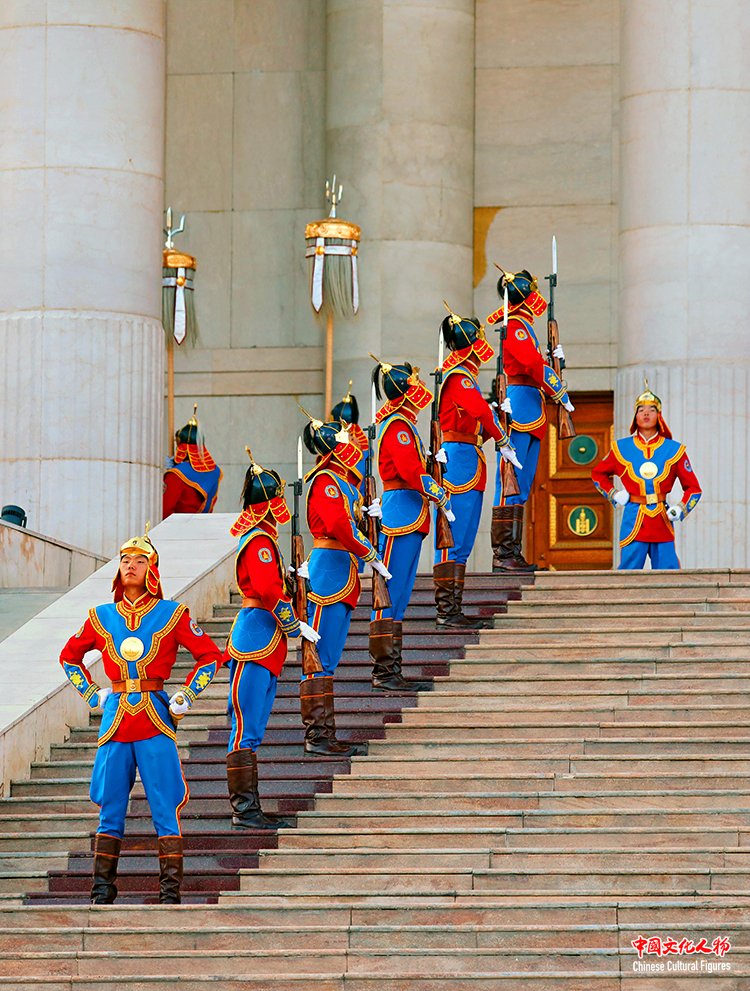
The dress of the Mongolian State Honor Guard adopts the style of ancient Mongolian warriors to highlight traditions and the history of Mongolia
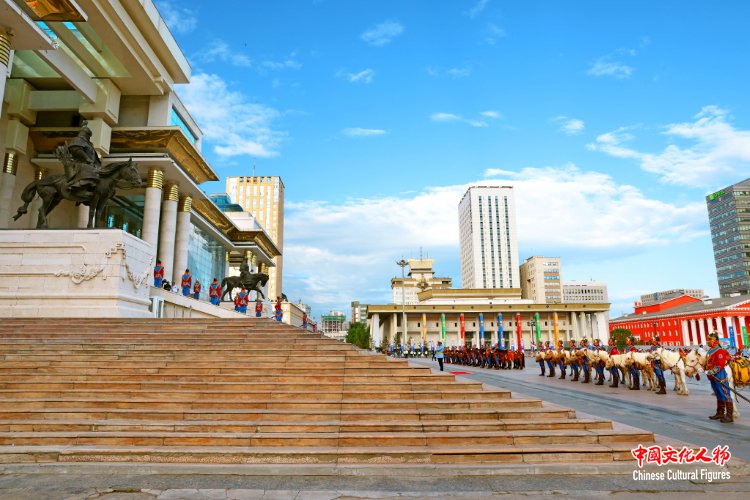
The State Great Khural (Parliament) of Mongolia passed a law in 2008 and designated July 10 every year as the State Flag Day of Mongolia
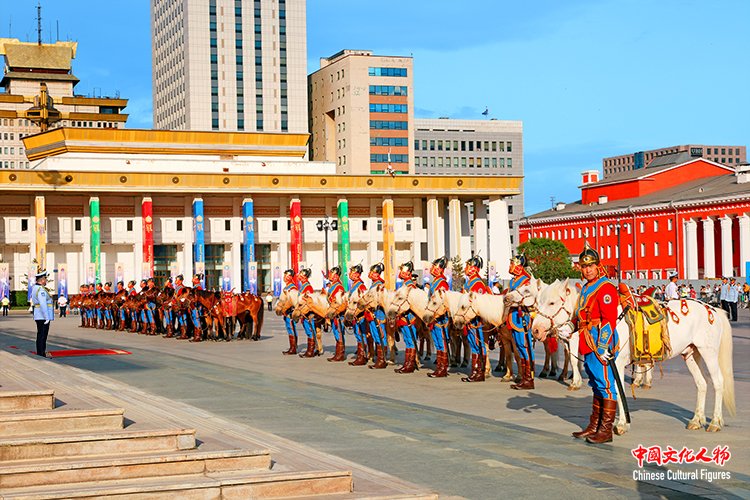
On the open square in front of the National Palace, a guard of honor and cavalry dressed in traditional clothing are lined up neatly
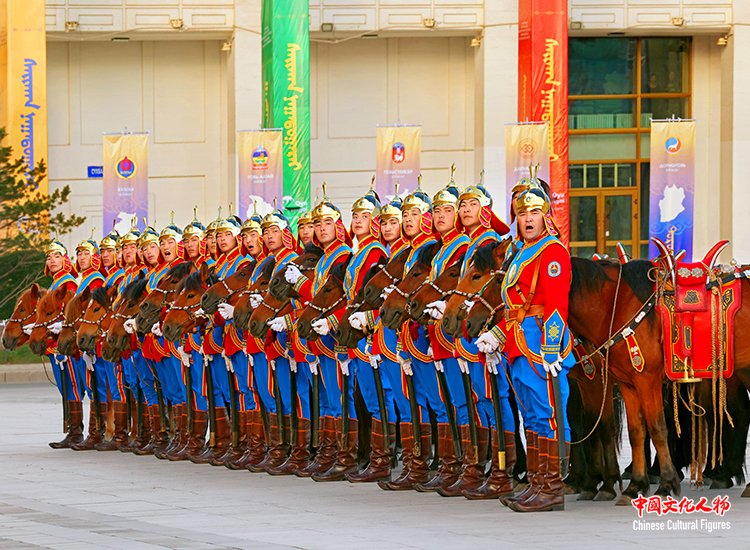
The Mongolian Cavalry Honor Guard dresses in traditional costumes
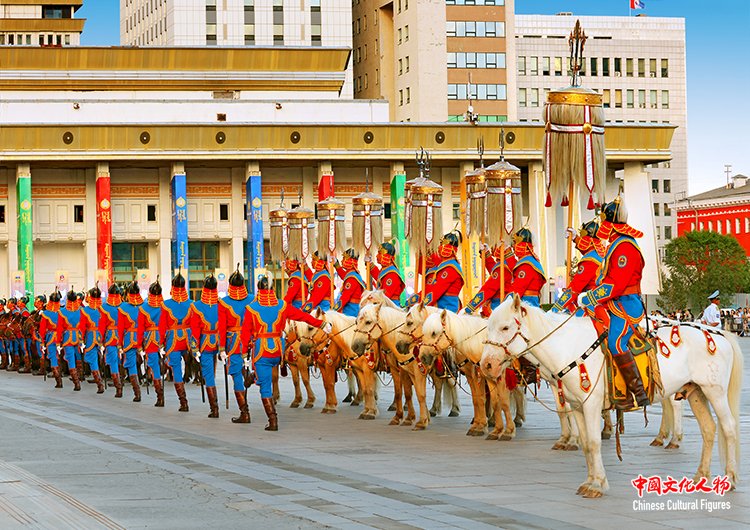
The Mongolian State Honor Guard holds the ceremonial Nine White Banners symbolizing the invincible god
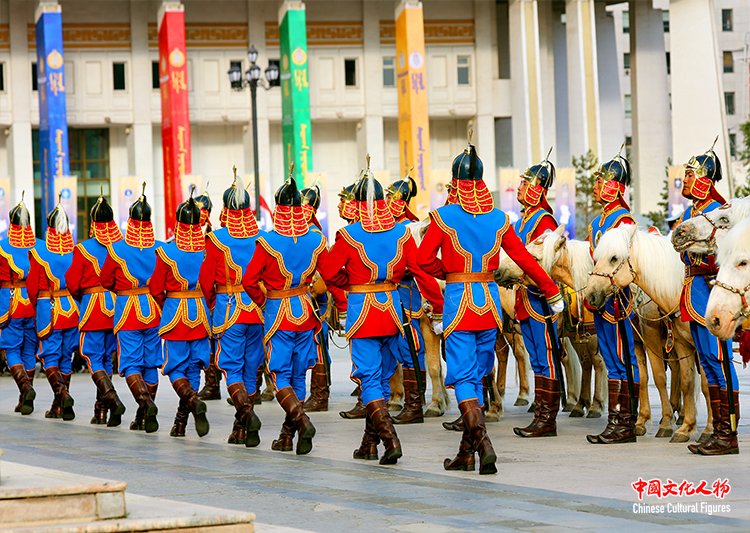
A costumed guard of honor marches on Sukhbaatar Square
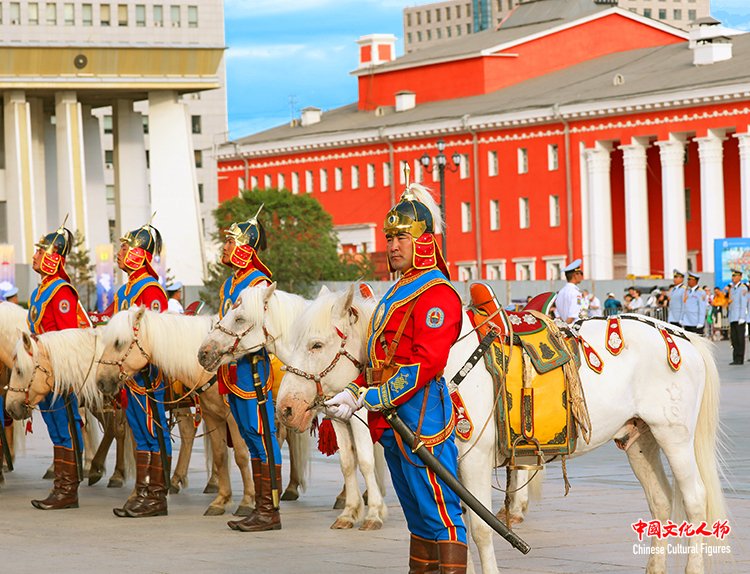
Mongolian Cavalry Honor Guard
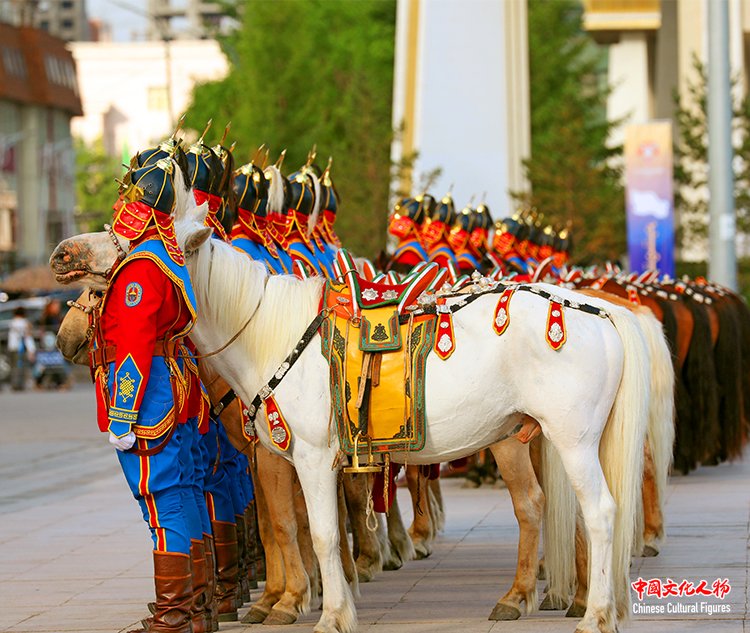
A neatly lined Mongolian Cavalry Honor Guard
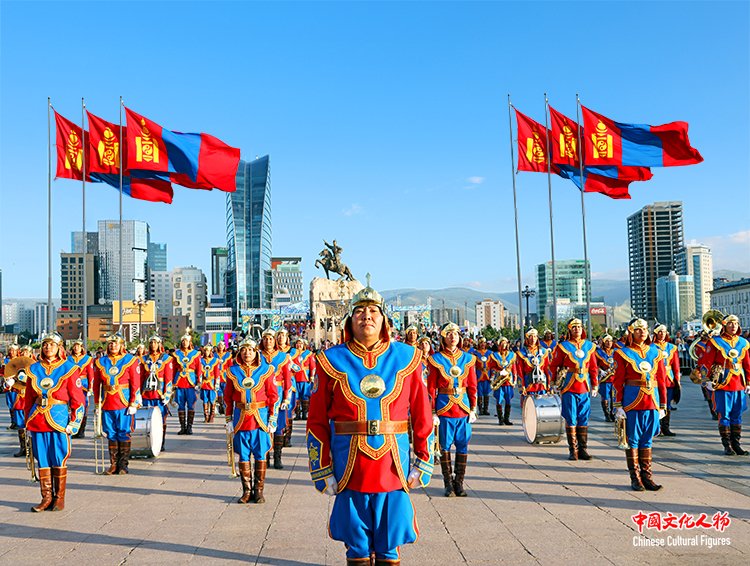
On Sukhbaatar Square, the national flags of Mongolia flutter in the wind. Mongolia has established the State Flag Day to inspire all citizens to strengthen their love and respect for the national flag

The Mongolian military band plays the national anthem
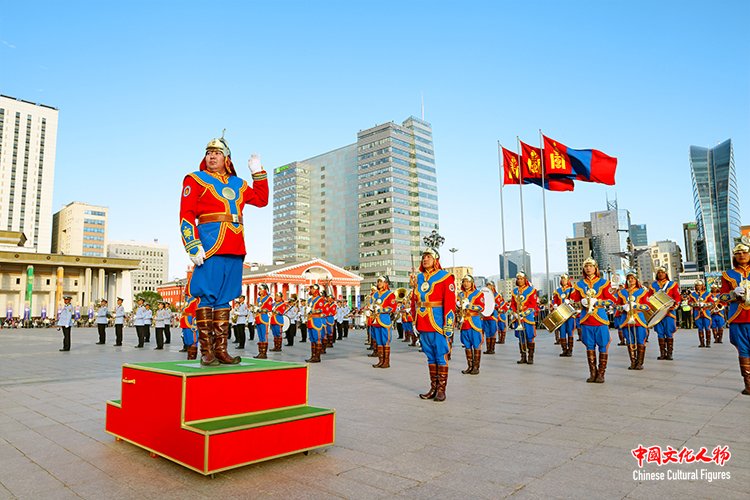
Honor guards of Mongolian armed forces attend the State Flag Day celebrations
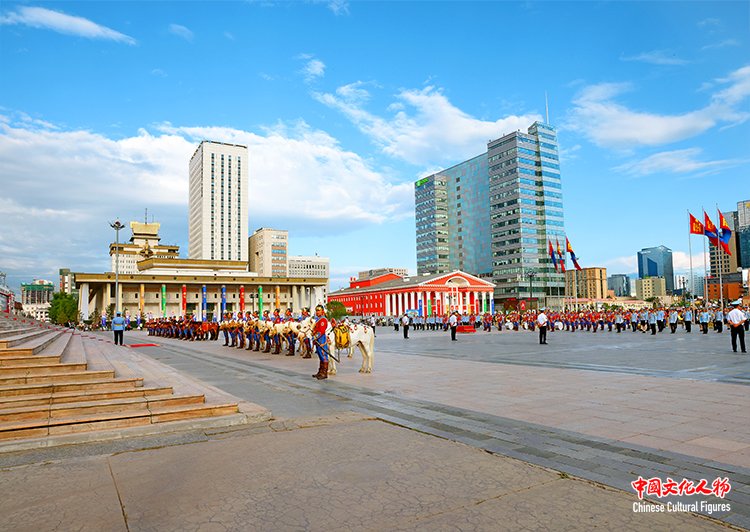
Sukhbaatar Square is located in the center of Ulaanbaatar, where Mongolian officials hold ceremonies during major festivals and celebrations. Mongolia also holds welcoming ceremonies here for visiting foreign heads of state and government
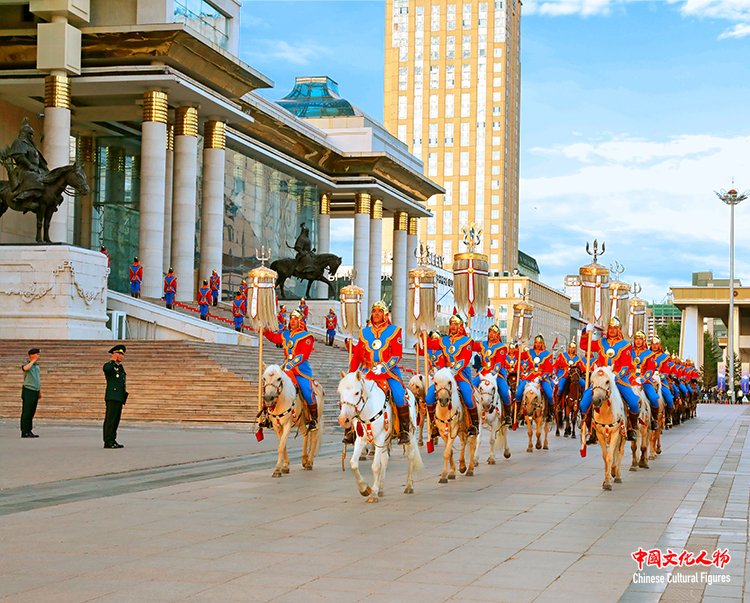
The Mongolian Cavalry Honor Guard escorts the Nine White Banners, which, together with the national flag and national emblem of Mongolia, are symbols of state power. The Nine White Banners housed at the National Palace will be brought over during every major event
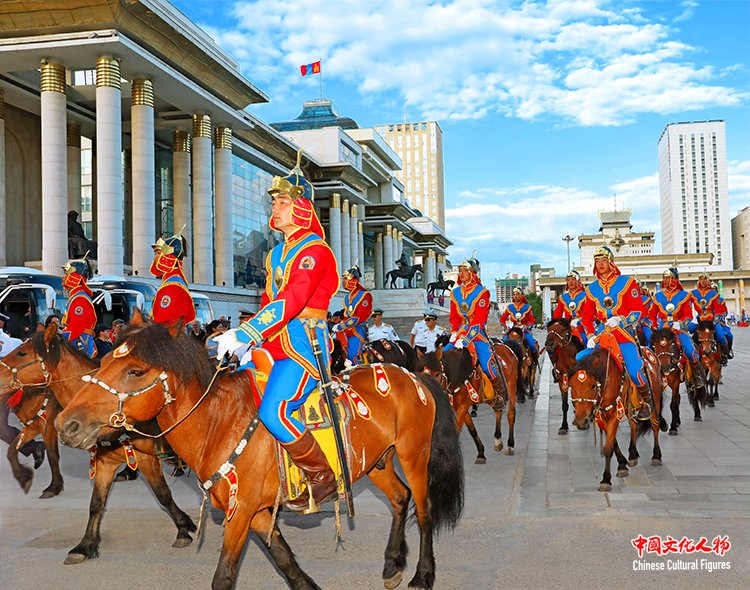
The Cavalry Honor Guard marches around the National Palace
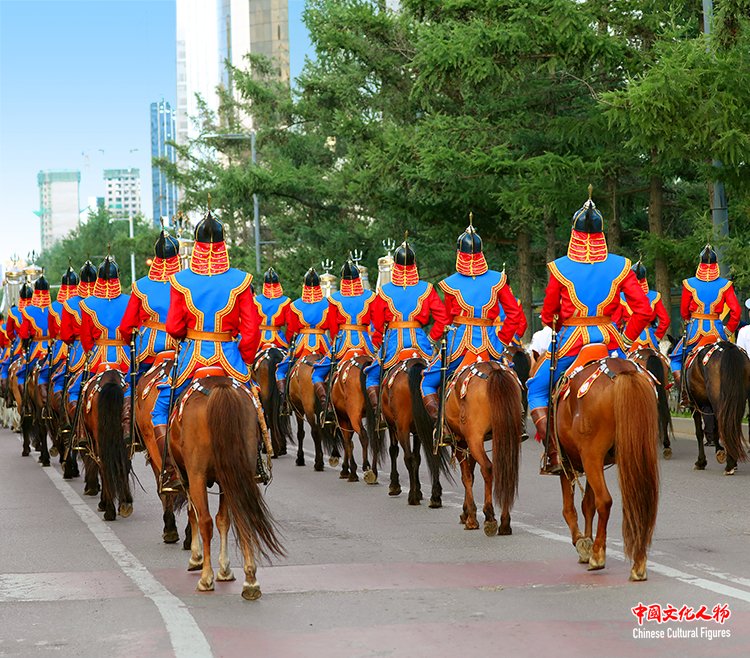
The Cavalry Honor Guard marches neatly on Sukhbaatar Square
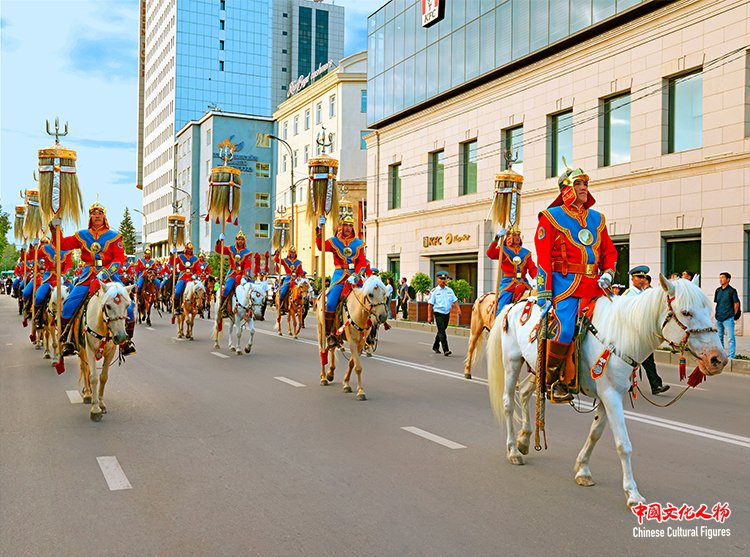
According to tradition, Naadam, regarded as the national holiday of Mongolia, is opened with the arrival of the Nine White Banners to the Central Stadium, which is carried all the way from the National Palace accompanied by an honor guard
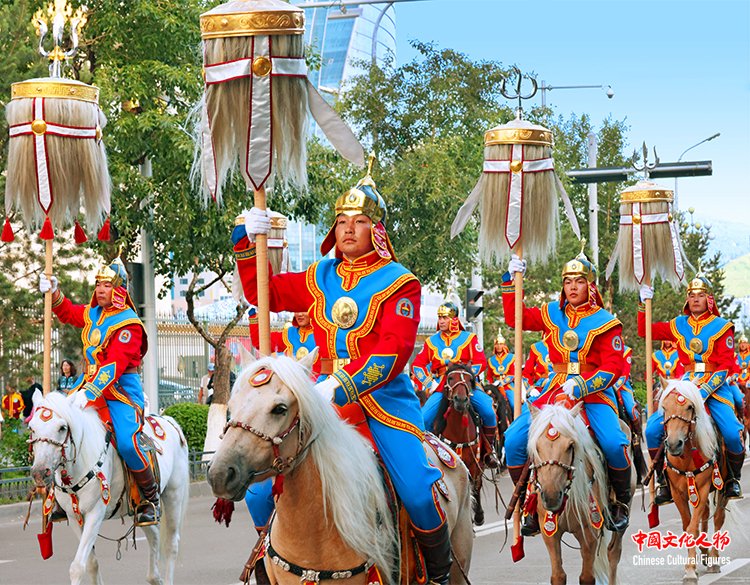
Rehearsal of the ceremony with the Nine White Banners carried all the way from the National Palace to the Central Stadium, the main stadium of Naadam
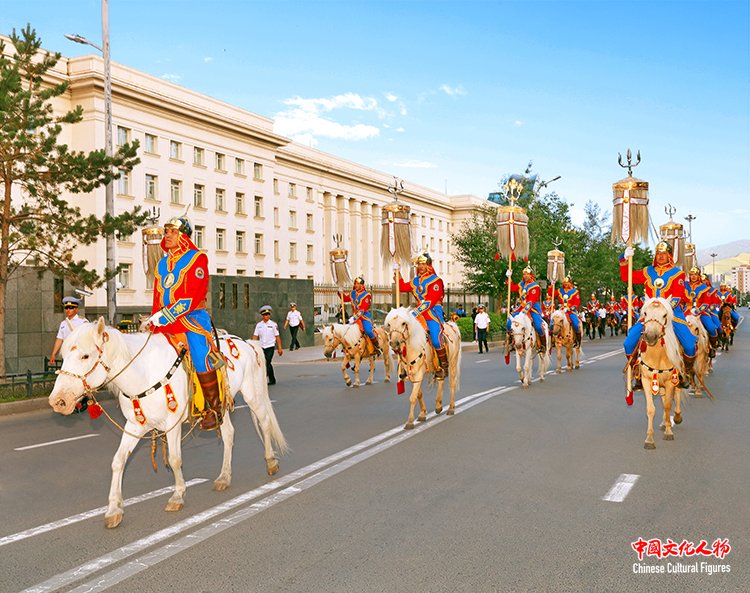
The Nine White Banners is one of the important symbols of Mongolia’s national sovereignty, which was initiated by Genghis Khan as symbols of ceremony

The four-storied Mongolian National Palace, also known as the Government House, is the symbol of state power and the political center of Mongolia
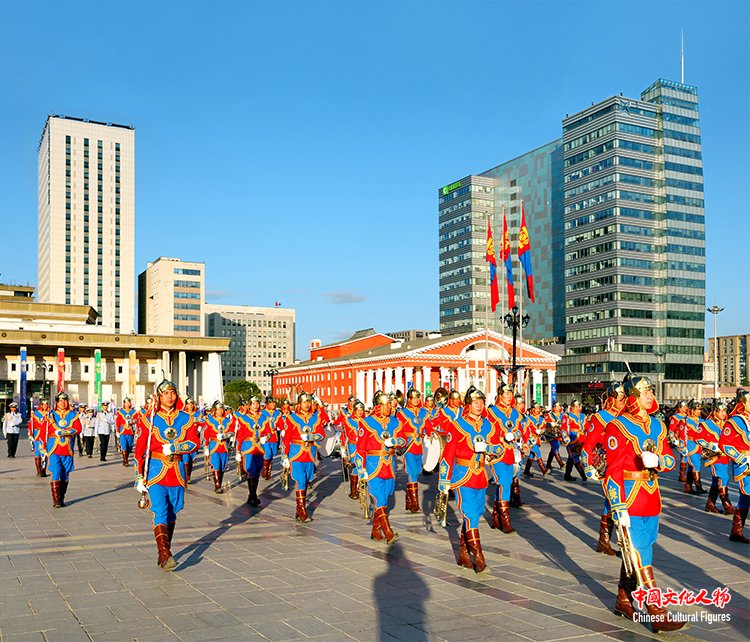
The costumed Mongolian military band
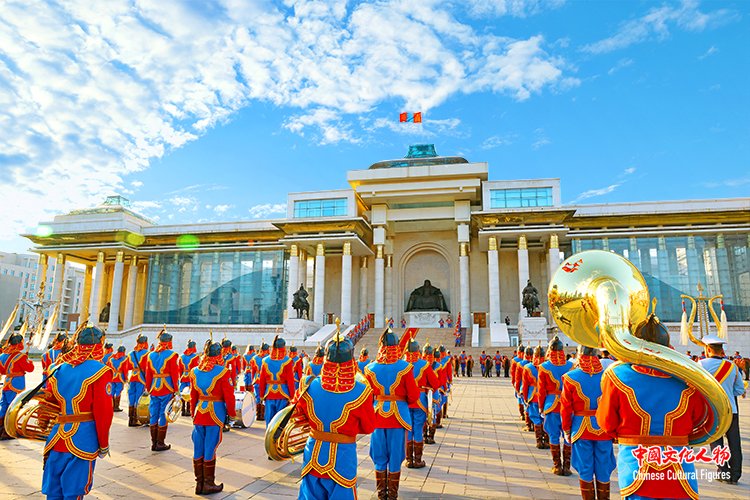
The national flag is one of the important symbols of Mongolia's independence and sovereignty. Since ancient times, the Mongolian nation has had a tradition of advocating and respecting symbols such as the Nine White Banners. To pass on this tradition, this activity is held regularly every year
Chinese Cultural Figure (editor-in-chief Wang Baosheng) On July 10, Mongolia held an annual national flag-raising ceremony and military parade on Sukhbaatar Square in the capital city of Ulaanbaatar, to celebrate the State Flag Day.
Mongolian President and Commander-in-Chief of Armed Forces Ukhnaagiin Khurelsukh, Chairman of the State Great Khural (Parliament) Gombojavyn Zandanshatar, Prime Minister Oyun-Erdene Luvsannamsrai, and other national leaders attended the ceremony. During the military parade, more than 2,000 Mongolian officers and men were inspected.
Sukhbaatar Square is located in the center of Ulaanbaatar, named for Mongolian revolutionary hero Damdin Sukhbaatar. The National Palace dominates the north side of the square. The eastern side of the square is flanked by the National Academic Theatre of Opera and Ballet of Mongolia and the Central Cultural Palace Building. On the square's western side sits the Ulaanbaatar City Administration building and the Central Post Office. The Sukhbaatar monument (an equestrian statue of Damdin Sukhbaatar) is centrally located on the square. On occasions of major festivals and celebrations, Mongolian officials hold celebration ceremonies here and also hold welcoming ceremonies for foreign heads of state and government here.
The national flag is one of the important symbols of Mongolia's independence and sovereignty. Since ancient times, the Mongolian nation has had a tradition of advocating and respecting symbols such as the Nine White Banners. To pass on this tradition, this activity is held regularly every year.
On that day, Ulaanbaatar was sunny, and people took to the streets to participate in the State Flag Day series activities. The national flag was hung on cars, on both sides of streets, and in residential quarters, and many pedestrians also held the national flag in their hands.
The State Great Khural of Mongolia passed a law in 2008, establishing July 10 of each year as the State Flag Day of Mongolia. The modern Mongolian ensign is a horizontal rectangle with a ratio of length to width of 2: 1. The flag surface consists of three vertically equal vertical rectangles, with red on both sides and blue in the middle. There are yellow fire, sun, moon, rectangles, triangles, and the yin and yang symbol in the red rectangle on the left. Red and blue on the flag are traditional colors loved by Mongolian people. Red signifies happiness and victory, blue symbolizes loyalty to the motherland, and yellow represents national freedom and independence. Fire, sun, and moon on the flag wish the people prosperity and eternal life for generations; Triangles and rectangles represent the wisdom, integrity, and loyalty of the people; The yin and yang symbol symbolizes harmony and cooperation; The two vertical rectangles symbolize the strong barrier of the country. Mongolia has established the State Flag Day to inspire all citizens to strengthen their love and respect for the national flag.
On the same day, Sukhbaatar Square also held the traditional ceremony of offering sacrifices to the Nine White Banners, the memorial ceremony to honor Genghis Khan, and the ceremony of offering flowers to the Sukhbaatar monument.
The Nine White Banners is one of the important symbols of Mongolia's independence and sovereignty. Since ancient times, the Mongolian nation has had a tradition of advocating and respecting the Nine White Banners and other symbols. It was Genghis Khan who initiated the Nine White Banners as symbols of ceremony. According to tradition, before the opening of the national day, the Nine White Banners are carried all the way from the National Palace to the Central Stadium accompanied by an honor guard.
(Editor: Zhang Yan, Liu Sheng)
